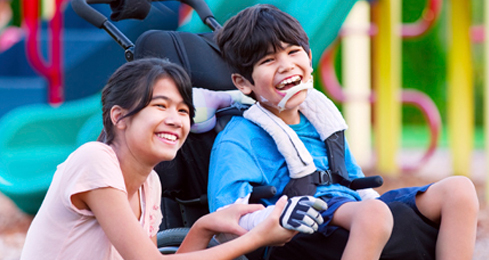
Phone: 212 520 1686
Email: info@yourcpf.org
TYPES OF CP

Cerebral Palsy (CP) describes a group of permanent disorders of the development of movement and posture, causing activity limitations, attributed to non progressive disturbances that occurred in the developing fetal or infant brain. The motor disorders of cerebral palsy are often accompanied by disturbances of sensation, perception, cognition, communication and behavior, epilepsy, and by secondary musculoskeletal problems.
The specific motor types present in CP are determined by the extent, type, and location of a child’s abnormalities. (Fig. 1)
SPASTIC CEREBRAL PALSY
Spastic CP is the most common type. People will experience increased muscle tone and their movements may appear stiff or awkward. Different parts of the body can be affected:
- Spastic hemiplegia/hemiparesis (Fig. 2) typically affects
the arm, hand, and leg on one side of the body. - Spastic diplegia/diparesis (Fig. 2) involves muscle
stiffness that is predominantly in the legs. The arms may
be affected to a lesser extent - Spastic quadriplegia/quadriparesis (Fig. 2) is the most
severe form of CP. It is caused by widespread damage to
the brain or significant brain malformations.
DYSKINETIC CEREBRAL PALSY
Dyskinetic motor patterns (also includes athetoid, choreoathetoid, and dystonia) are characterized by slow and uncontrollable writhing or jerky movements of the hands, feet, arms, or legs.
ATAXIC CEREBRAL PALSY
Ataxia affects balance and depth perception. Children with
ataxia will often have poor coordination and walk unsteadily
with a wide-based gait.
MIXED TYPES
Mixed types of CP refer to symptoms that don’t correspond to
any single type of CP but are a mix of types. For example, a
child with mixed CP may have some muscles that are too tight
and others that are too relaxed.







